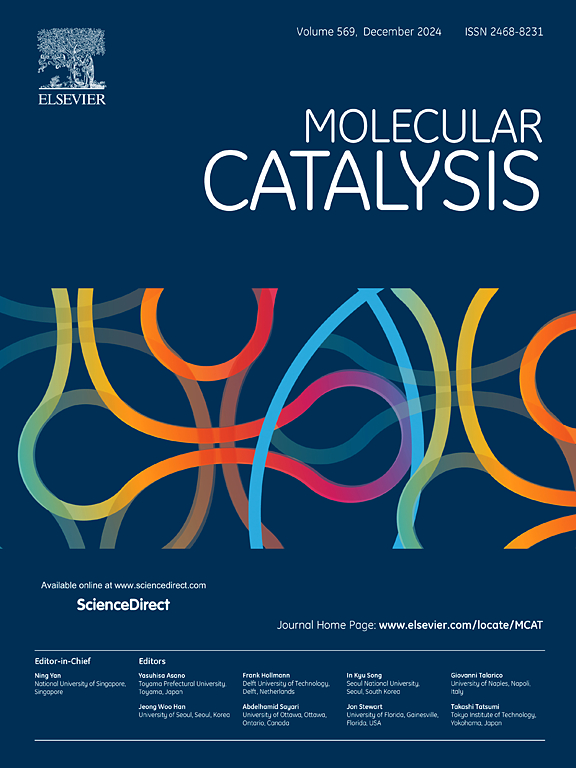老狗,新把戏:Hoveyda-Grubbs催化剂对NH3BH3水解的DFT见解
IF 4.9
2区 化学
Q2 CHEMISTRY, PHYSICAL
引用次数: 0
摘要
Grubbs催化剂是一种用于烯烃复分解的经典催化剂,最早用于氨硼烷的水解。采用密度泛函理论研究Hoveyda-Grubbs催化剂促进氨硼烷水解的机理,通过详细的机理途径生成3个当量的H2。氯离子是否发生解离对反应机理有至关重要的影响。计算结果表明,氯离子解离后,氨硼烷与催化剂配位形成稳定的中间体。随后,中间体经历H2O的亲核攻击和O-H键的活化过程,最终生成H2。三种产氢循环均表现出相似的催化机理。通过能量分解分析(EDA)、基于Hirshfeld配分法(IGMH)的独立梯度模型和Fukui函数,研究了竞争过渡态、反应位点和分子间相互作用力的能量来源。本文章由计算机程序翻译,如有差异,请以英文原文为准。

Old dog, new tricks: DFT insights into the hydrolysis of NH3BH3 by Hoveyda-Grubbs catalysts
The Grubbs catalyst, a classic catalyst used for the metathesis of alkenes, was first used for the hydrolysis of ammonia borane. A density functional theory study was carried out to explore the mechanism by which the Hoveyda-Grubbs catalyst facilitates the hydrolysis of ammonia borane, producing three equivalents of H2 through detailed mechanistic pathways. Whether the dissociation of chloride anions occurs or not has a crucial influence on the reaction mechanism. The computational results indicate that upon the dissociation of chloride anions, the coordination of ammonia borane with the catalyst is capable of forming a stable intermediate. Subsequently, this intermediate undergoes the nucleophilic attack of H2O and the activation process of the O–H bond, eventually generating H2. All three hydrogen generation cycles exhibit a similar catalytic mechanism. Through energy decomposition analysis (EDA), an independent gradient model based on the Hirshfeld partition method (IGMH), and Fukui functions, the energy sources of competing transition states, reaction sites, and intermolecular interaction forces are investigated.
求助全文
通过发布文献求助,成功后即可免费获取论文全文。
去求助
来源期刊

Molecular Catalysis
Chemical Engineering-Process Chemistry and Technology
CiteScore
6.90
自引率
10.90%
发文量
700
审稿时长
40 days
期刊介绍:
Molecular Catalysis publishes full papers that are original, rigorous, and scholarly contributions examining the molecular and atomic aspects of catalytic activation and reaction mechanisms. The fields covered are:
Heterogeneous catalysis including immobilized molecular catalysts
Homogeneous catalysis including organocatalysis, organometallic catalysis and biocatalysis
Photo- and electrochemistry
Theoretical aspects of catalysis analyzed by computational methods
 求助内容:
求助内容: 应助结果提醒方式:
应助结果提醒方式:


